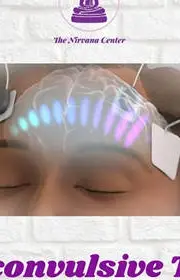
What is Electro Convulsive Therapy (ECT)? How Effective Is It?
25 Nov 2020- Electroconvulsive therapy (ECT) is a medical treatment most commonly used in patients with severe Major Depression, Bipolar disorder, Schizophrenia, Catatonia and other severe psychiatric disorders that has not responded to other modalities of treatments.
- ECT involves a brief electrical stimulation of the brain while the patient is under It is typically administered by a team of trained medical professionals that includes a psychiatrist, an anaesthesiologist, and a nurse or physician assistant.
- Does ECT Work?
- ECT is definitely efficacious in certain severe conditions, particularly when the patients have not responded well to other modalities of treatment or when immediate beneficial effect is required as in patients with Suicidal Intent or Catatonic patients.
- Although ECT can be very effective for many individuals with serious mental illness, it is not a cure. To prevent a return of the illness, most people treated with ECT need to continue with some type of maintenance treatment. This typically means psychotherapy and/or medication or, in some circumstances, ongoing ECT treatments.
- Much of the stigma attached to ECT is based on early treatments in which high doses of electricity were administered without anaesthesia, leading to memory loss, fractured bones and other serious side effects.
- ECT is much safer today. Although ECT may still cause some side effects, it now uses electric currents (Brief Pulse ECT Machine) given in a controlled setting to achieve the most benefit with the fewest possible risks.
- Frequency:ECT treatments are generally given two to three times weekly for three to four weeks — for a total of six to 12 treatments.
- The number and type of treatments you'll need depend on the severity of your symptoms and how rapidly they improve.
- You can generally return to normal activities a few hours after the procedure. However, some people may be advised not to return to work, make important decisions, or drive until one to two weeks after the last ECT in a series, or for at least 24 hours after a single treatment during maintenance therapy.
- Results: Many people begin to notice an improvement in their symptoms after about six treatments with electroconvulsive therapy. Full improvement may take longer, though ECT may not work for everyone.
- ECT still remains one of the oldest and safest biologicaltreatment available. Relinquishing the myths and changing the faultyattitudes towards ECT can only remove our ignorance.
References: